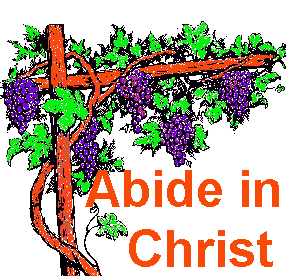"Burden–Bearer"
Amos carried a tremendous
burden.
AUTHOR:
The book takes its name from its author. His name
signifies "burden," or "burden–bearer."
George L. Robinson
writes: "Stern, fearless, self–contained, a man of
granite make, he possessed, a powerful well–knit
mind and a vivid imagination, and is one of the most
arresting figures ever on the stage of Hebrew
history."
Amos lived at Tekoa which
was a small village about twelve miles in the hills
south of Jerusalem. It was located "on the edge of
the desert that breaks down toward the Dead Sea. A
more desolate place is hard to imagine. The soil
around the little town itself was and is very scant
and shallow. It was and is a hard place to secure a
livelihood." Amos was a herdsman, and he
supplemented his income by dressing an almost
worthless fruit produced by sycamore trees. Robinson
says the vegetation in the area was evidently not
very luxuriant, and he probably had very few sheep.
"He raised a peculiar breed of stunted, fine–wooled
sheep, a breed small in size, and ugly in
appearance, but highly esteemed on account of their
wool."
DATE:
Amos dates the exact year of his call as "two years
before the earthquake." It was a "shock" that would
be remembered two and a half centuries later (Zech.
14:5). Some interpreters suppose that a solar
eclipse might have accompanied the earthquake (8:9),
and astronomers tell us that there was such an event
on June 15, 763 B.C. If so, the preaching of Amos of
Tekoa at Bethel was somewhere around 760–750 B.C.
Amos is the first of the writing prophets. He is the
older contemporary of Hosea and Micah.
The Biblical accounts of
Uzziah and Jeroboam II are found in II Kings
14:17-15:7 and II Chronicles 26.
PURPOSE:
Amos writes to warn the northern kingdom of Israel
to return to the Lord or be judged. The Lord God is
a righteous God who demands allegiance from His
followers. At the same time He is a merciful God who
is willing to forgive and restore them. It is an
urgent call to repentance.
KEY VERSE:
4:12
OCCASION:
Amos is a simple peasant whose life is marked by
many hardships. He travels to the Northern Kingdom
to sell his wool and sees the evil at the heart of
the nation. The evil arouses his righteous
indignation. He sees the insincerity of the
religious leaders, the righteous were hated,
immorality was prevalent, and superstition
prevailed.
Prosperity had dulled the
hearts of God’s people.
The Northern Kingdom of
Israel prospered under Jeroboam II. It was the
golden age of Israel. Both Uzziah and Jeroboam II
brought political and economic stability and
prosperity to their respective kingdoms. Territorial
borders were expanded through successful military
conquest against foreign foes. Israel and Judah
managed a peaceful coexistence at this time, and
commercial enterprise and agricultural production
flourished.
However, the prophets
looked beyond the facade of the golden age and saw
the dry rot of social and moral decay in both
kingdoms. In real life both nations were ripe for
the judgment of God (Amos 8:1-2; cf. 3:9-15).
"Outwardly the kingdom
was at the zenith of power but inwardly it was
idolatrous and corrupt (II Kings 14:24–25). Material
prosperity and social evils further characterized
the times (2:6–8; 3:10; 4:1; 5:10–12; 8:4–6)"
(Ryrie). Uzziah was the king of Judah at a time of
prosperity. These were good times economically.
Israel was "on a roll." Commerce was flourishing,
building was booming, and the military was enjoying
the spoils of victory. However, prosperity had
dulled the hearts of God’s people.
THEME:
"Prepare to meet thy God" is the theme. The basic
message to Jeroboam II and Israel was "the end has
come for my people" (8:2). The LORD will speak in
judgment and the uttering His voice will be
devastation in Israel. Actually two themes run
though the book: the impending judgment if Israel
does not repent (1:20), and a messianic theme
summarized (9:5). The time will come when God will
build up the fallen booth of David. The prophet
looks to the future and sees the work of the Messiah
(cf. Acts 15:15ff). A near fulfillment would be
Israel’s return to the land from captivity; the
distinct fulfillment would be a kingdom without end.
The eternal reign of Christ is in view.
STYLE:
Amos’ writing has been described as "pure,
classical, vivid, rhetorical, grave, original,
picturesque, simple, striking, rustic, bold,
lyrical, rhythmical" (B. O. Herring, Studies in
the Prophets). There are elements of repetition,
questions and exclamations. "His sentences are short
and uninvolved, and are always regular,
well–balanced, and flowing." He was "rude in speech,
but not in knowledge." Robinson says, "The best
writing is an unaffected transcript of the best
speaking." C. C. Ryrie notes, Amos’ "writing shows
that he was a man of affairs, not an untutored
rustic."
It is impossible to
ascertain whether Amos dictated his revelations to a
scribe or composed them himself. It is easier to
assume he committed his revelations to writing upon
returning to Tekoa from his preaching tour to
Israel. His writing is full of first person accounts
of his messages and visions (5:1; 7:1-9; 8:1; 9:1).
Title: Introduction to
Amos
Series: Introduction
Bible Books



